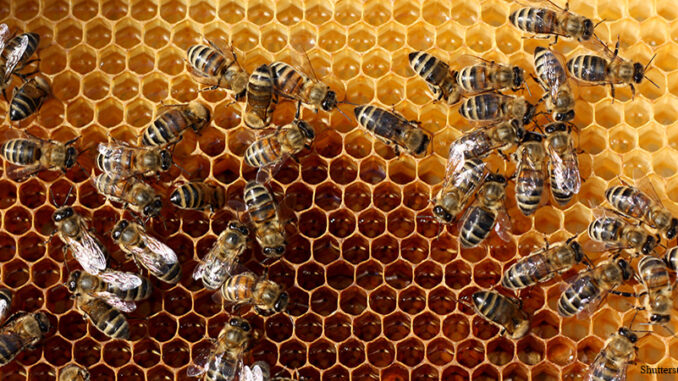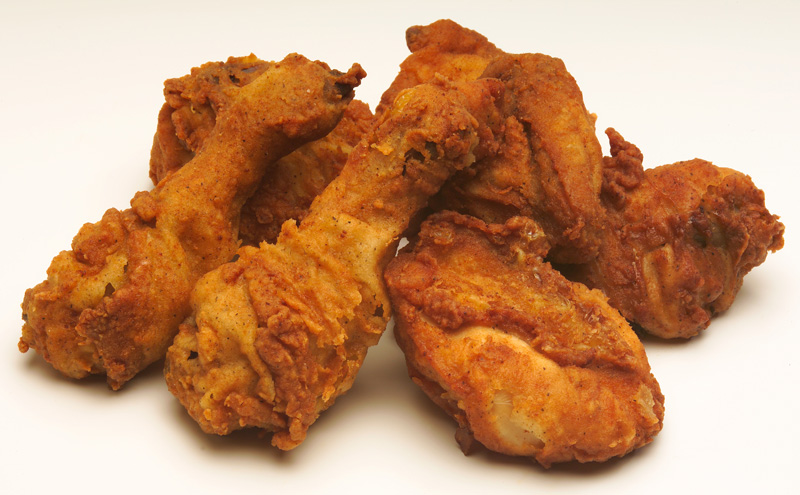
Can Bees Do Math?
Have you ever wondered if animals can count? What about insects? If that sounds like a crazy idea, you’ll be surprised to hear that honeybees can count to four. Even more impressively, Australian scientists have recently discovered that they may also understand the concept of zero.
Here’s what happened. Scientists in Australia trained bees to understand the difference between two numbers by setting up two platforms. Each platform had between one and four shapes on it. On the platform with fewer shapes, scientists put a sweet sucrose solution. On the platform with more shapes, they put a bitter quinine solution. In this way, the bees learned to land on the platform with fewer shapes on it. Scientists then upped the ante by asking the bees to do the same thing again, but this time, one of the platforms had zero shapes on it. The bees consistently chose the one with zero, showing that they understand the concept that zero is less than one or some.
This may sound obvious, but it’s actually a pretty complicated concept. Even human children have trouble learning it. In fact, the concept of zero didn’t even exist in the West until the mathematician Fibonacci introduced it in about 1200 C.E., and it has been proven that the brain has to go through four distinct steps in order to grasp it. Some primates, such as monkeys and chimpanzees, can be taught to understand it. So can dolphins and, oddly, African grey parrots. But this is the first time that an invertebrate has shown this kind of understanding. Scientists aren’t sure why this is, especially since a honeybee’s brain is only about the size of a sesame seed. But this may help scientists create artificial intelligence in complex systems.
Dig Deeper Consider the following quote from Science Direct: “Zero stands for emptiness, for nothing, and yet it is considered to be one of the greatest achievements of humankind.” Do you agree or disagree? Explain.
Cause of Deadly Wildfires Revealed
You may remember the deadly wildfires that raged throughout Northern California last fall, which killed 43 people (including two firefighters), destroyed thousands of structures, and burned over 1.3 million acres of land. Up until recently, no one knew how the wildfires had started. Almost all wildfires are caused by humans. Generally, they are the result of people leaving campfires unattended, burning trash or other debris, failing to put out their cigarettes, or deliberately starting fires (arson). In this case, though, a recent report from the California Department of Forestry and Fire Protection states that the culprit is Pacific Gas and Electric, a utility company.
According to the report, downed power lines owned by PG&E came into contact with trees and branches (usually by limbs falling onto the lines), which then caught fire. Then, wind gusts of speeds up to 70 mph caused the wildfires to spread so rapidly that firefighters were unable to contain them.
So what does this mean for PG&E? Already, more than fifty victims of last fall’s wildfires have filed lawsuits against them. According to California state law, utility companies can be held responsible for the costs of firefighting, even if the fires started through no fault of the company’s. However, this case is made more complicated by the fact that an earlier investigation found that PG&E had not trimmed trees near its power lines like it was supposed to, resulting in three wildfires earlier in the year.
What Do You Think? In your opinion, should PG&E be responsible for financial damages associated with last fall’s wildfires in California? Why or why not?
Kentucky Fried . . . What?
What would KFC–Kentucky Fried Chicken–be without the chicken?
It’s not a riddle. In fact, customers in Great Britain are about to find out, now that the fast-food chain will begin offering chicken-like vegetarian options in place of its traditional meat products. The new chicken-like product will still include the secret blend of herbs and spices the original does but will cut calories for the consumer.

So, why in Britain? Public Health England, a governmental group, has recently issued guidelines for an initiative to reduce the calorie count of many popular foods by 20 percent by 2024, with the goal of eliminating childhood obesity. The guidelines include asking food service companies to change the recipe of their products, reduce portion sizes, and encourage customers to purchase lower-calorie products. If the program is successful at meeting its target in five years, more than 35,000 obesity-related deaths in Britain could be prevented.
KFC is working with the British government to cut calories on several of its menu choices. The vegetarian option is one example of this initiative. Also, you might not have known this, but the British are wild about KFC. In fact, they are the largest European market for fast-food chicken. When a chicken shortage in February caused half of Britain’s 900 KFC stores to close, it became known as the #KFCCrisis, and some customers were so outraged that they called the police.
KFC will be testing the new vegetarian product this year. If all goes well, it will launch in 2019, though the company hasn’t said yet whether or not they will offer this option globally.
Dig Deeper KFC isn’t the only fast-food chain to experiment with offering lower-calorie, vegetarian substitutes. Last year, McDonald’s introduced the McVegan burger in Sweden and Finland. What were the results?
To Read or Not to Read?
You may have heard the following scary statistic: One-third of high school graduates never read another book again for the rest of their lives. College graduates do a little better, but not much: 42 percent of them never read another book after college. Think those numbers are low? Try taking a look at how many American adults are reading poetry.
The Survey of Public Participation in the Arts, which is a collaboration between the National Endowment for the Arts (NEA) and the Census Bureau, aims to do just that. The last time they did a survey asking American adults if they had read poetry in the past year was in 2012. And their findings were not good: only 6.7 percent of adults responded that they had.
That’s the bad news. The good news is that, since then, the number of American adults reading poetry has nearly doubled. In fact, in 2017, 11.7 percent of adults in the U.S. said that they had read poetry in the past year.
So why the sudden improvement in the past five years? Several reasons. The first is that the NEA and other arts groups have started using creative methods to get poems into the hands of readers, from posting them on buses to delivering them daily to your email inbox. School programs such as Poetry Out Loud encourage students to love and write poetry. The sharpest increases in poetry readership over the past five years has been among women, minorities, and adults with only some college education. That means the idea that poetry belongs only to old, dead, highly-educated white men is disappearing, and in its place is a new generation of young poets who are ready to make their voices heard.
